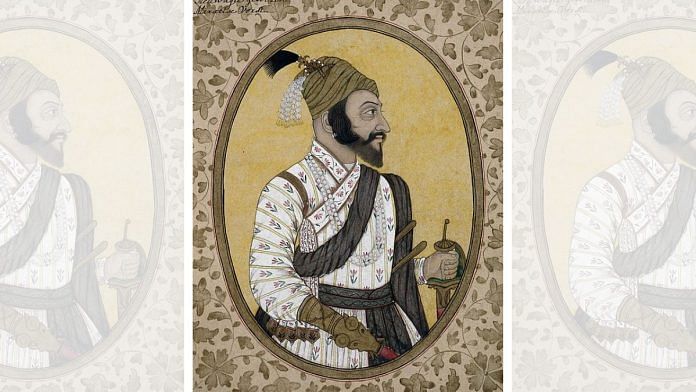Thank you dear subscribers, we are overwhelmed with your response.
Your Turn is a unique section from ThePrint featuring points of view from its subscribers. If you are a subscriber, have a point of view, please send it to us. If not, do subscribe here: https://theprint.in/subscribe/
In the rugged folds of the Sahyadri range, where crags guard secrets and the air smells of wet stone and rebellion, an army moved not with grandeur but with grit. These were Shivaji’s men—light cavalrymen of the Maratha swarajya—who would go on to not only harass the great Mughal war machine, but also trap the emperor himself for 27 years, bankrupt his treasury, and lay the groundwork for the collapse of the world’s richest empire.
Small Horses, Big War
Each Maratha cavalryman rode two small local horses—not the tall, high-strung Arabian or Central Asian breeds favored by the Mughals, but hardy Deccani ponies that could survive on sparse fodder and navigate the steep, broken hill paths like goats.
These horses were the heartbeat of Shivaji’s army. One rested while the other rode. They were fast, easy to maintain, and perfect for long-distance raids and surprise strikes.
Food That Carried a War
Maratha soldiers carried no cooks, no retinues. In a simple pouch slung behind the saddle, you would find:
- Bhakri made of jowar or bajra,
- A pinch of dry chutney or pithla,
- Onions, jaggery, maybe a bit of roasted chana.
It was war fought on millet and discipline, not on gold and silk.
Forts That Breathed Resistance
Shivaji didn’t build palaces—he fortified hilltops. Raigad, Sinhagad, Pratapgad, and dozens more became his network of resistance. These were not monuments; they were strategic outposts, connected by secret paths and loyal messengers. When Mughal armies surrounded one, others would flare up in revolt.
These forts were as much a psychological map as a military one: each a reminder that the Maratha flame could never be extinguished.
Tactics of Thunder and Vanishing
Shivaji’s army didn’t seek grand battles—they chose when and where to fight. They attacked supply convoys, isolated forts, or Mughal detachments. They moved at night, scattered by day, and returned only to sting again. The Mughal strategy of drawn-out sieges and heavy baggage columns collapsed in the face of this moving war.
Shivaji enforced strict discipline: no attacking civilians, no harming women, no desecrating temples. His soldiers were not looters but guardians of a code.
Twenty-Seven Years, One Trap
Shivaji’s rebellion had already begun bleeding the Mughal empire long before Aurangzeb arrived in the Deccan in 1681. But once the emperor came, he never left.
For the last 27 years of his life, Aurangzeb stayed trapped in the south, chasing the ghosts of Shivaji, fighting an enemy who refused to stand still, spending treasure that never returned, and sacrificing sons, generals, and peace—all for nothing.
A Broken Empire, A Puppet Throne
By the time Aurangzeb died in 1707, the Mughal Empire was a shell. His descendants became puppet kings, elevated and discarded by ambitious nobles like the Sayyid brothers, who killed emperors like butchers killing sheep.
The Mughal crown remained in Delhi, but the soul of the empire had long ago escaped—into the hills, with the hoofbeats of men who never bowed to its grandeur.
The Legacy
The Maratha soldiers were not just warriors; they were the prelude to India’s decentralization, the harbingers of guerrilla resistance, and the reason why the mightiest empire on the subcontinent collapsed from within.
They didn’t just fight history—they rewrote it.
Compiled by Rammohan Rao Errabelli
Kalleda Village
These pieces are being published as they have been received – they have not been edited/fact-checked by ThePrint.


